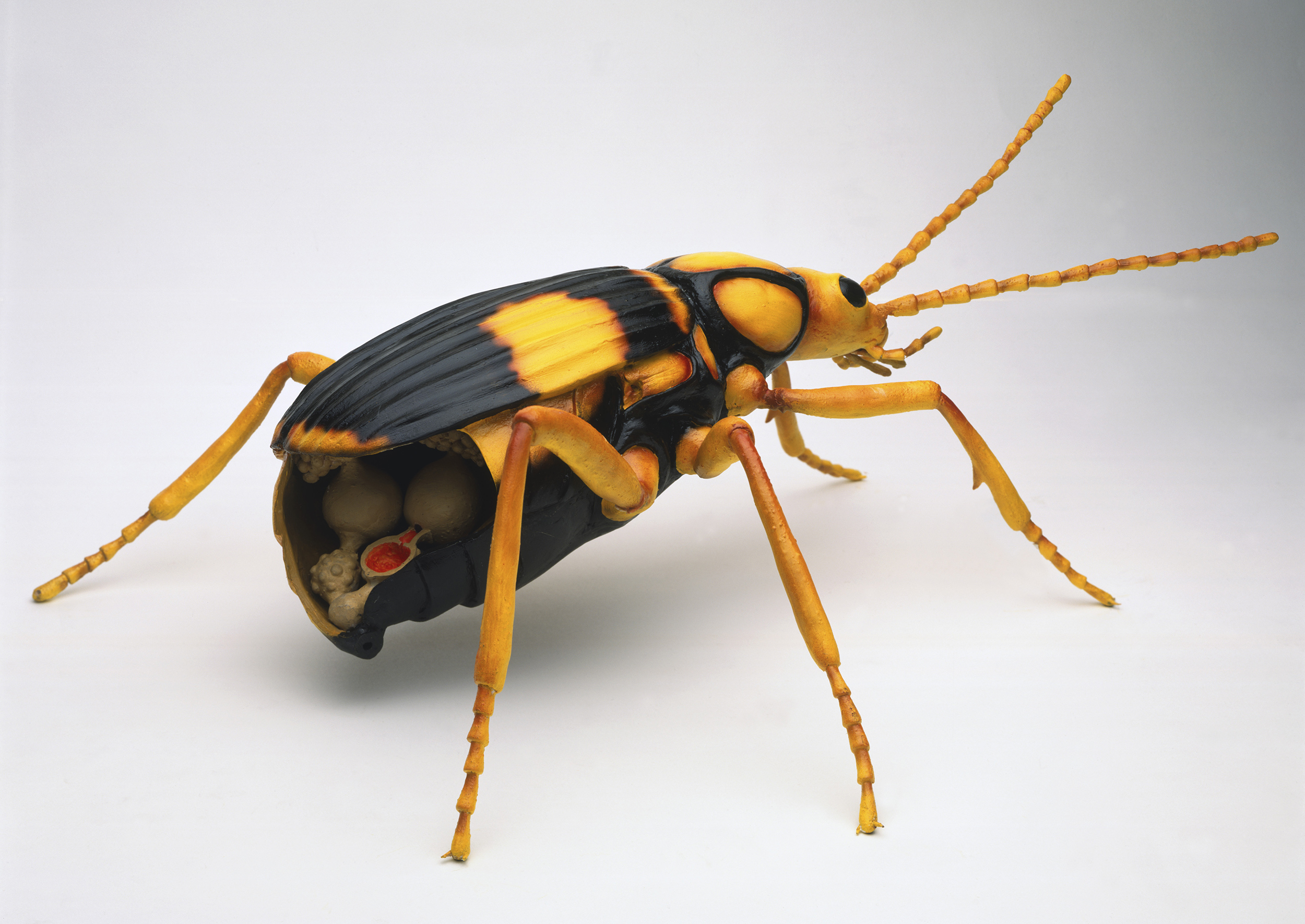Bombardier beetles inhabit all the continents except Antarctica. They typically live in woodlands or grasslands in Nigeria or other temperate zones but can be found in other environments if there are moist places to lay their eggs.
 The bombardier beetle’s tail end is equipped with twin “spray nozzles” (or gland openings) to shoot its gaseous ammunition. The gas comes from two reactant chemicals—hydrogen peroxide and hydroquinone. When the beetle contracts its sphincter muscle, these two chemicals mix with catalytic enzymes.
The bombardier beetle’s tail end is equipped with twin “spray nozzles” (or gland openings) to shoot its gaseous ammunition. The gas comes from two reactant chemicals—hydrogen peroxide and hydroquinone. When the beetle contracts its sphincter muscle, these two chemicals mix with catalytic enzymes.
The ensuing chemical reaction brings the temperature up to water’s boiling point. While the one-way valve closes to protect the beetle’s organs, out fires the mixture of gas and steam at 212 degrees Fahrenheit (100°C). Some types of bombardier beetles can swivel their gland openings and shoot in nearly all directions using deflection plates. All types hit their target with a marksman’s precision.
Snapshot
The bombardier beetle is a member of the family Carabidae, which contains more than 40,000 species worldwide. It belongs to the genus Brachinus, which contains 304 species in the United States alone. Since they need enough moisture to lay their eggs, they usually live in temperate environments like woodlands or grasslands near a source of water.
The bombardier beetle progresses through several stages. After the egg hatches, it enters the larval stage, molting as it grows. Next, it metamorphoses into the pupa, looking much like the adult. After the pupa stage, the adult beetle sheds its skin and crawls away. Most beetles live just several weeks.
With most species being carnivorous, bombardier beetles generally prey on insects. Since some of these insects are agricultural pests, beetles serve a helpful role. After hunting during the night, bombardier beetles often gather together in moist, protected places like inside hollow logs or under large rocks.
Not a large bug, bombardier beetle species range in length from less than half a centimeter to three centimeters.
By examining the design of the bombardier beetle’s defense spray mechanism, scientists have built a similar nozzle to improve fuel, medical, and agricultural technology.
DEFENSE
When the beetle feels threatened it opens a valve which allows the aqueous solution from the reservoir to reach the vestibule. The catalases lining the vestibule wall facilitate the decomposition of hydrogen peroxide into oxygen gas and water.
This reaction is very exothermic , and the released energy raises the temperature of the mixture to near 100 °C, vaporizing about a fifth of it. The resultant pressure buildup forces the entrance valves from the reactant storage chambers to close, thus protecting the beetle's internal organs. The boiling, foul-smelling liquid is expelled violently through an outlet valve, with a loud popping sound. The beetles' glands store enough hydroquinone and hydrogen peroxide to allow the beetle to release its chemical spray roughly 20 times. In some cases this is enough to kill a predator. The main component of the beetle spray is 1,4-Benzoquinone , which is particularly irritating to the eyes and the respiratory system.
The flow of reactants into the reaction chamber and subsequent ejection occur in a series of about 70 pulses, at a rate of about 500 pulses per second. The whole sequence of events takes only a fraction of a second. These pulsations are caused by repeated microexplosions which are the results of the continuous pressure on the reservoir and the oscillatory opening and closing of the valve that controls access to the reaction chamber. This pulsed mechanism is beneficial for the beetles' survival because the system uses pressure instead of muscles to eject the spray at a constant velocity, saving the beetle energy. Also, the reintroduction of new reactants into the vestibule where enzymes are stored, reduces the temperature of the chamber, thereby protecting the peroxidases and catalases from thermal denaturation.
Typically the beetle turns its body so as to direct the jet towards whatever triggered the response. The gland openings of some African bombardier beetles can swivel through 270° and thrust between the insect's legs, discharging the fluid in a wide range of directions with considerable accuracy.
ENCOUNTER WITH A SINISTER TOAD
The sinister toad closes in on the beetle. Instead of a futile attempt to scurry away, the beetle waits, as though surrendering. Just before the toad’s tongue flicks out to snag its victim, the beetle fires its cannon. Pop!
Pop! Pop! Out shoots burning gas. The emissions fire in pulsation, 500 times per second, but the defensive attack is complete before one second passes. Rather than getting a tasty snack, the defeated toad hops away with a mouthful of noxious gasses.
Now, whenever you see a Bombardier Beetle, try as much as letting it have its way.
looking beautiful
Downvoting a post can decrease pending rewards and make it less visible. Common reasons:
Submit
Thank you... pls upvote
Downvoting a post can decrease pending rewards and make it less visible. Common reasons:
Submit
Hi! I am a robot. I just upvoted you! I found similar content that readers might be interested in:
http://animals.wikia.com/wiki/Bombardier_beetle
Downvoting a post can decrease pending rewards and make it less visible. Common reasons:
Submit